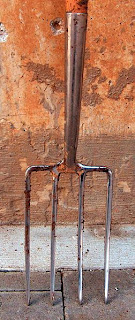We use the petals of these wonderful edible flowers as a decoration in our salads. But it turns out that they have many soothing and healthful uses.
Here's a description provided by Beauty Feast at http://www.beautyfeast.com/Beauty-Ingredients/7-Wonders-Calendula-Flower.htm
Calendula belongs to a family of Marigold plant. It is a dark orange flower and can be cultivated in window boxes, pots or in the backyard.
It is very simple to take care of this plant.This plant is mostly found in Egypt. An individual can produce the plants from early summer.
It has been used before the time of Cleopatra because of its healing properties. Healers from the Middle East and Mediterranean use the flower for many medications.
The following are some amazing things about Calendula flower:
For Sunburn skin
Heat the Calendula petals with essential oil at low temperature for 6-8 hours in the large double boiler. After that, filter the petals in cheesecloth and let keep it aside.
Mix the essential oil with equal quantity of Apricot Kernel Oil and Carrot Seed Oil. There are many other essential oils suggested such as grape seed oil, hemp oil, jojoba oil and wheat germ oil.
Relaxing and Soothing Bath
Bring the cheese clothes with the petals of Calendula and put them in a bath with lukewarm water. Now, take a bath of using this water, as it will make the skin soft and smooth. It is particularly efficient for itchy and dry skin. Take some drops of lavender essential oils and perfumed candle for getting relax moment. The Calendula flower will get sunrays from the spirit during the winter dejection. |
Moisturizer
One can make use of essential oil with the petals of calendula as a moisturizer for getting shiny and soft skin. It can be kept in the fridge or on a cool place.
Other method to make a good moisturizer is to utilize olive oil for the body. Take some calendula petals and add them to olive oil in an airtight container. Keep it for 15 days. Now, it is prepared to apply.
But remember, one should make use of cheesecloth to strain the oil prior to apply it. One can use this procedure with other essential oils such as almond oil, rosehip oil, avocado oil, pumpkin seed oil, coconut oil etc.
Healing injuries
Calendula flower has complex medical properties. The gel of calendula flower is beneficial to treat cold sores, bruises, light cuts and burns.
Tea
Take some dry petals of Calendula and put them into the boiling and purified water to prepare an amazing natural tea. This tea is very useful for upsetting stomach and sluggish liver. One can also add some fresh mint leaves or nettle leaves for amazing flavor and it has really healing properties.
Wonderful addition to the diet
Calendula is enriched with Vitamin C. It can be added to pasta, salads and soups. It gives colorful touch to the recipes. The petals are useful to cure the digestive system. When an individual prepares the rice with some calendula petals, they will really change into orange or yellow color.
Calendula tincture
Take a cup of calendula petals and added with distilled water and vodka. Drain the petals and store the tincture in an airtight container. One should use 4-5 drops of this combination with a glass of water for gastro intestinal upsets and digestive conditions.

